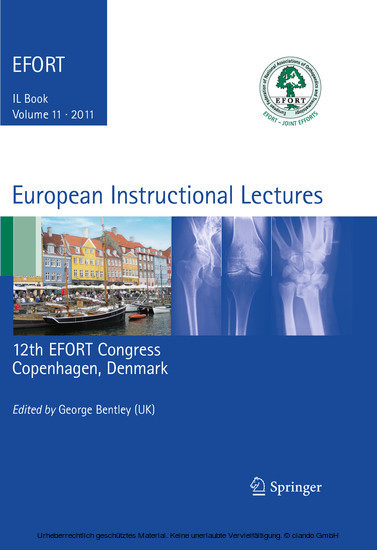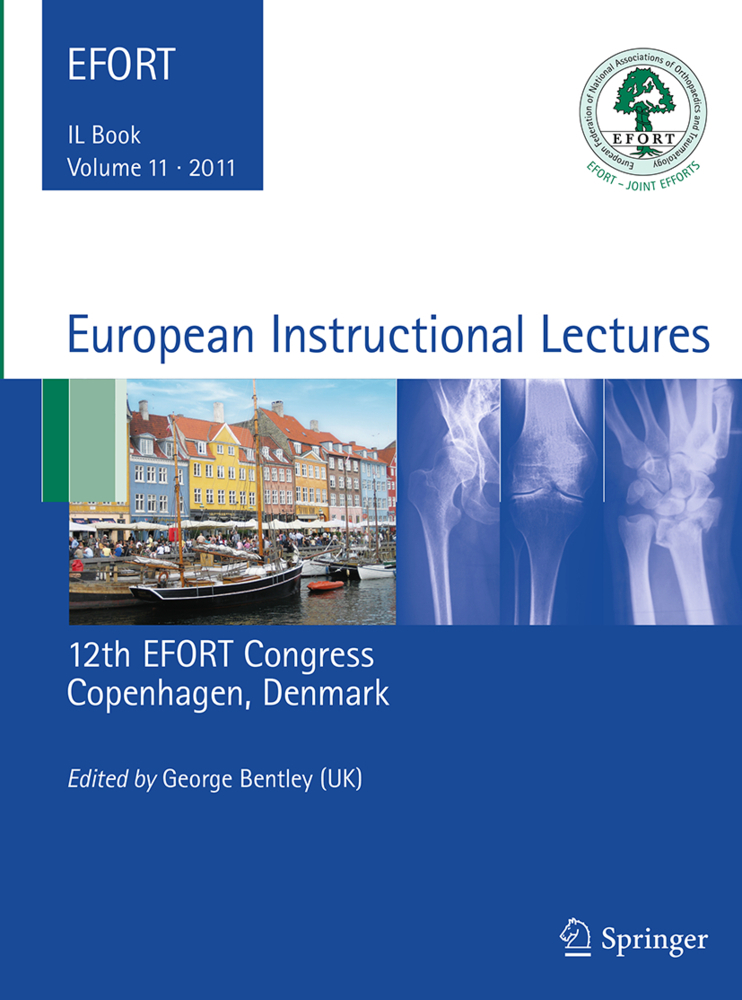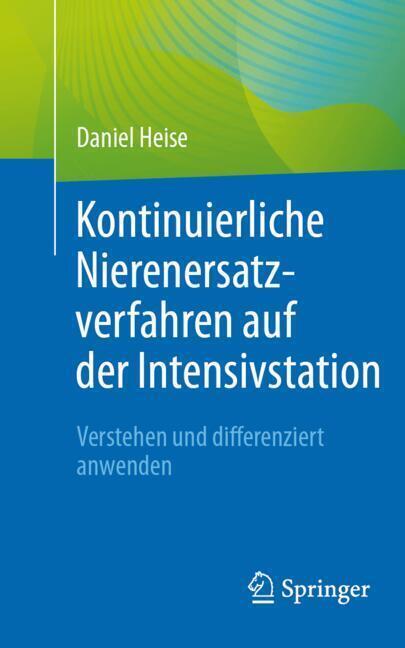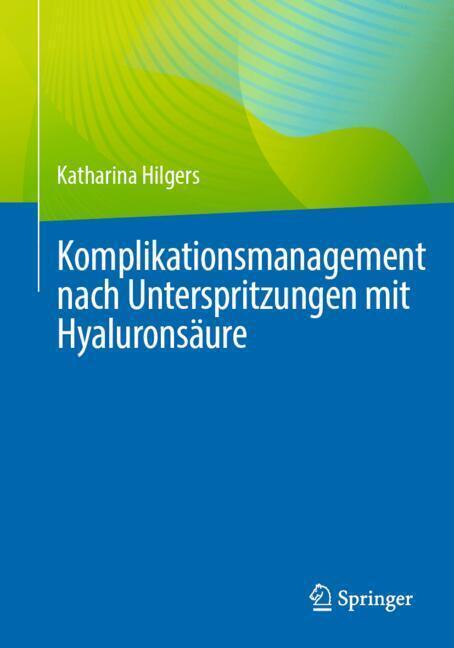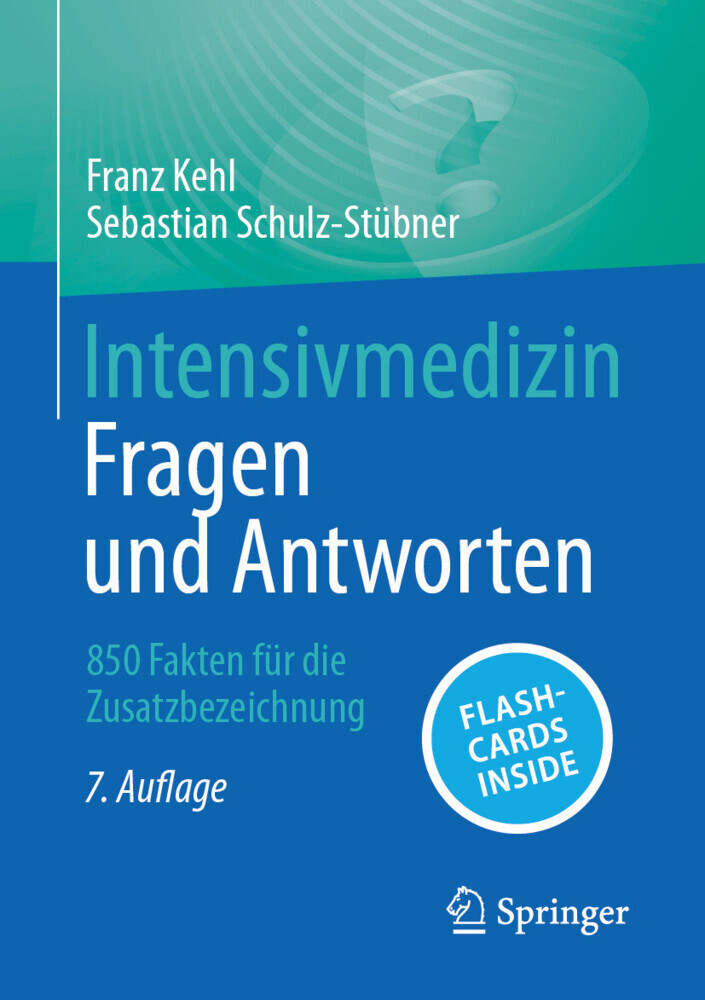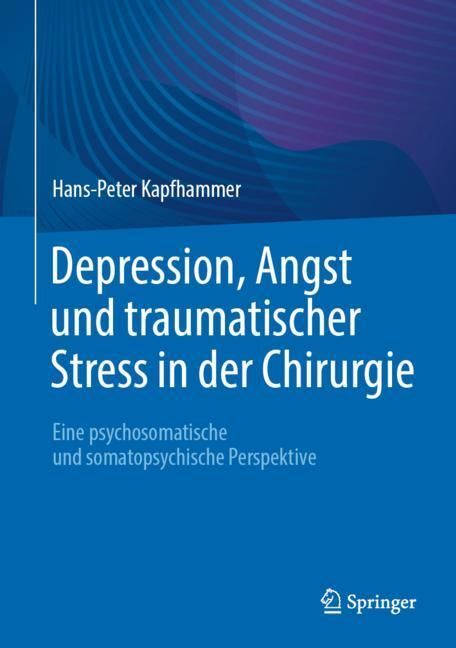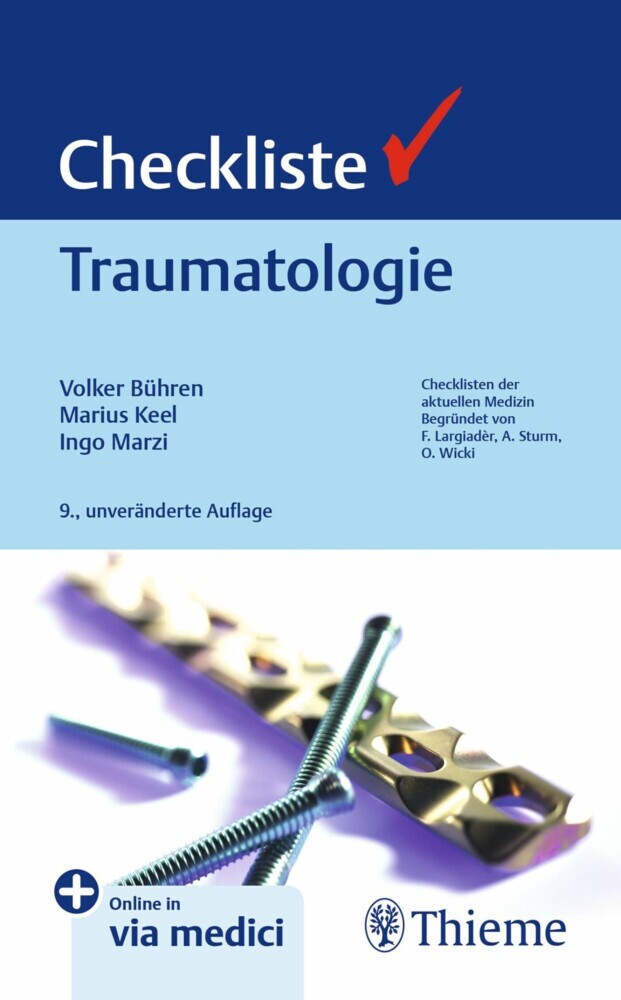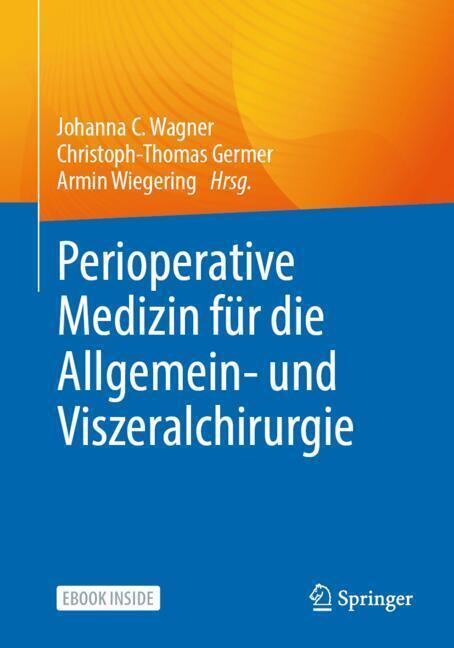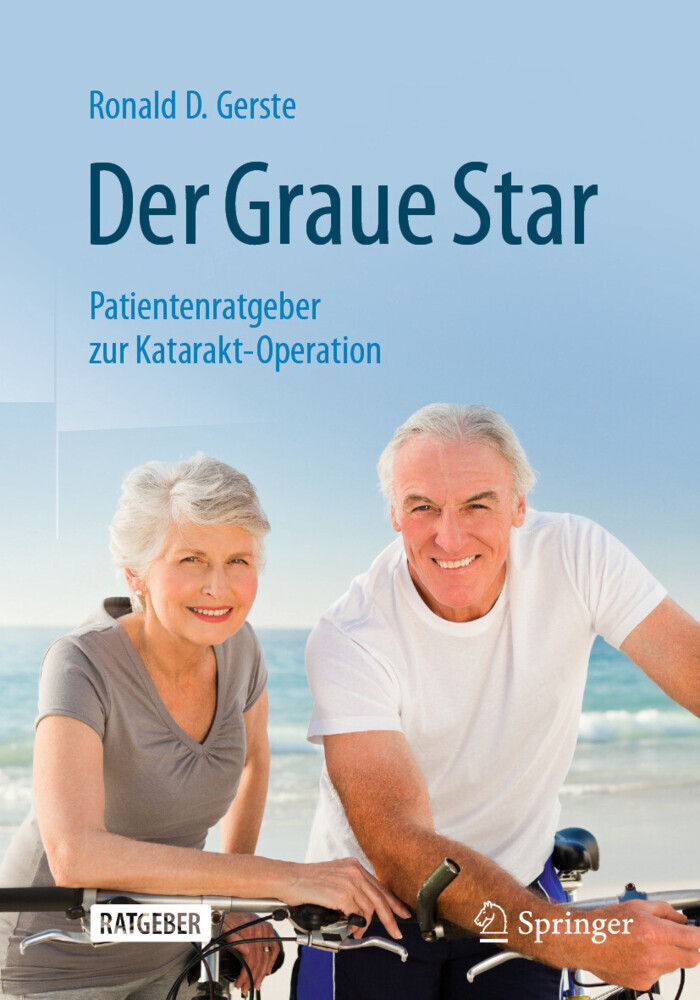European Instructional Lectures
Volume 11, 2011, 12th EFORT Congress, Copenhagen, Denmark
European Instructional Lectures
Volume 11, 2011, 12th EFORT Congress, Copenhagen, Denmark
This eleventh volume in the EUROPEAN INSTRUCTIONAL LECTURES series continues the format of educational chapters from across Orthopaedics and Traumatology contributed by distinguished Orthopaedic Educators in Europe. It provides up-to-date material and major advances covering a range of topics including: General Orthopaedics, Basic Science and Technology, Musculo-skeletal Tumours, Infections, Paediatric Orthopaedics, Trauma, Spine, Upper Limb, Hip, Knee, Leg, Ankle and Foot. All the lectures were presented at the 12th EFORT Congress in Copenhagen, Denmark. The lectures are an authoritative source of information illustrated by radiographs, MRI and CT Scans, operative photographs, tables and line drawings. They are a valuable source of instruction for Surgeons and Trainees alike.
Professor George Bentley is Professor of Orthopaedic Surgery and Director of the Institute of Orthopaedics, Royal National Orthopaedic Hospital, Brockley Hill, Stanmore, Middlesex, HA 4LP, UK. He is Director of Clinical Studies, Clinical Training and Research Advisor. Furthermore, he is Honorary Consultant Orthopaedic Surgeon, Royal National Orthopaedic Hospital Trust, Stanmore. He is Past President of EFORT, Chairman Awards and Prizes Com., and Chairman Scientific Publ. Com.
Professor George Bentley is Professor of Orthopaedic Surgery and Director of the Institute of Orthopaedics, Royal National Orthopaedic Hospital, Brockley Hill, Stanmore, Middlesex, HA 4LP, UK. He is Director of Clinical Studies, Clinical Training and Research Advisor. Furthermore, he is Honorary Consultant Orthopaedic Surgeon, Royal National Orthopaedic Hospital Trust, Stanmore. He is Past President of EFORT, Chairman Awards and Prizes Com., and Chairman Scientific Publ. Com.
1;European Instructional Lectures;4 2;Copyright page;5 3;Foreword;6 4;Preface;8 5;Contents;10 6;Contributors;12 7;Part 1: General Orthopaedics, Basic Science and Technology;16 7.1;Bone Substitutes in Clinical Work;17 7.1.1;Bone Substitutes;17 7.1.2;Clinical Use of Bone Substitutes;18 7.1.3;Conclusions/THM;21 7.1.4;References;21 7.2;Epidemiology and Variability of Orthopaedic Procedures Worldwide;22 7.2.1;Introduction;22 7.2.2;Materials and Methods;23 7.2.2.1;Data;23 7.2.2.2;Statistical Analysis;24 7.2.3;Results;24 7.2.4;Discussion;27 7.2.5;References;31 8;Part 2: Bone and Joint Tumours;33 8.1;Cartilage - Forming Bone Tumours;34 8.1.1;Introduction;34 8.1.2;Benign Cartilage Tumours;34 8.1.2.1;Osteochondroma;34 8.1.2.1.1;Clinical Presentation;35 8.1.2.1.2;Radiology;35 8.1.2.1.3;Differential Diagnosis;35 8.1.2.1.4;Histology (Macro- and Micro-);35 8.1.2.1.5;Genetics EXT1 and EXT2;36 8.1.2.1.6;Treatment;37 8.1.2.2;Enchondroma;37 8.1.2.3;Clinical Presentation;37 8.1.2.3.1;Radiology;37 8.1.2.3.2;Differential Diagnosis;38 8.1.2.3.3;Histology;38 8.1.2.3.4;Treatment;38 8.1.2.4;Multiple Enchondromatosis;38 8.1.2.5;Juxtacortical (Periosteal) Chondroma;39 8.1.2.5.1;Radiology;39 8.1.2.5.2;Differential Diagnosis;39 8.1.2.5.3;Histology;39 8.1.2.5.4;Treatment;39 8.1.2.6;Chondromyxoid Fibroma;39 8.1.2.6.1;Radiology;40 8.1.2.6.2;Differential Diagnosis;40 8.1.2.6.3;Histology;40 8.1.2.6.4;Treatment;41 8.1.2.7;Chondroblastoma;41 8.1.2.7.1;Radiology;42 8.1.2.7.2;Differential Diagnosis;42 8.1.2.7.3;Histology;42 8.1.2.7.4;Treatment;42 8.1.2.8;Synovial Chondromatosis;42 8.1.2.8.1;Radiology;42 8.1.2.8.2;Differential Diagnosis;42 8.1.2.8.3;Histology;42 8.1.2.8.4;Treatment;43 8.1.3;Malignant Cartilage Tumours;43 8.1.3.1;Malignant Chondrosarcoma;43 8.1.3.1.1;Clinical Presentation;44 8.1.3.1.2;Radiology;44 8.1.3.1.3;Histology;46 8.1.3.1.4;Genetics;47 8.1.3.2;Rare Chondrosarcoma Subtypes;47 8.1.3.3;Dedifferentiated Chondrosarcoma;47 8.1.3.4;Mesenchymal Chondrosarcoma;47 8.1.3.5;Clear-cell Chondrosarcoma;47 8.1.3.5.1;Treatment;48 8.1.4;Local Recurrences;51 8.1.4.1;Prognosis;51 8.1.5;Adjuvant Treatment;53 8.1.6;References;54 9;Part 3: Paediatrics;56 9.1;The Current State of Treatment for Clubfoot in Europe;57 9.1.1;Introduction;57 9.1.1.1;Epidemiology;57 9.1.1.2;Aetiology;57 9.1.1.2.1;Aetiology of the Congenital Clubfoot;57 9.1.1.2.2;Aetiology of the Secondary Clubfoot;57 9.1.1.3;Pathophysiology of the Clubfoot;57 9.1.1.3.1;Bone;57 9.1.1.3.2;Muscles and Soft Tissues;58 9.1.2;Diagnosis;59 9.1.2.1;Presentation;59 9.1.2.2;Palpation;59 9.1.2.3;Clubfoot Scoring;59 9.1.2.3.1;Dimeglio Scoring System;59 9.1.2.3.2;Pirani Scoring System;61 9.1.3;Medical Imaging;62 9.1.3.1;Radiographs;62 9.1.3.2;Ultrasound;62 9.1.3.3;Computertomography (CT)/Magnet Resonance Imaging (MRI);62 9.1.3.4;Pedobarography;62 9.1.4;Therapy;63 9.1.4.1;Conservative Therapy;63 9.1.4.2;Ponseti Technique for Therapy of Clubfoot;63 9.1.4.3;Manipulation and Cast Correction in Detail;63 9.1.4.4;Classical Method of Correction of Idiopathic Clubfoot;68 9.1.4.5;French Functional Physiotherapy Method;68 9.1.4.6;Botulinum Type A Toxin;68 9.1.4.7;Operative Therapy;68 9.1.4.8;Post-operative Care;69 9.1.4.9;Therapy of Relapsed, Persistent Clubfoot or Clubfoot in Older Patients;69 9.1.5;Conclusions;71 9.1.6;References;72 10;Part 4: Polytrauma: Pelvis;75 10.1;Management of Pelvic Fractures;76 10.1.1;Introduction;76 10.1.2;Pelvic Anatomy and Stability;76 10.1.3;Sources of Bleeding;77 10.1.4;Classification of Pelvic Ring Injuries;77 10.1.5;Initial Assessment;78 10.1.5.1;Haemodynamic Instability;80 10.1.5.2;Mechanical Instability;80 10.1.6;Open Pelvic Fractures;82 10.1.7;Complications;82 10.1.7.1;Genito-Urinary Injuries;82 10.1.7.2;Neurological Injuries;84 10.1.7.3;DVT-PE;84 10.1.8;Post-operative Treatment;84 10.1.9;References;84 11;Part 5: Shoulder, Elbow, Arm and Forearm;86 11.1;The Reverse Shoulder Prosthesis;87 11.1.1;Is There a Need for a Reverse Solution?;87 11.1.2;What Does It Mean - A "Reverse System"?;87 11.1.
Bentley, George
| ISBN | 9783642183218 |
|---|---|
| Artikelnummer | 9783642183218 |
| Medientyp | E-Book - PDF |
| Copyrightjahr | 2011 |
| Verlag | Springer-Verlag |
| Umfang | 226 Seiten |
| Sprache | Englisch |
| Kopierschutz | Digitales Wasserzeichen |

